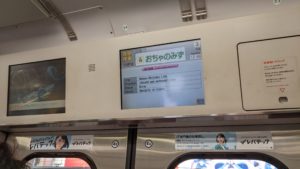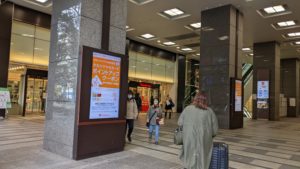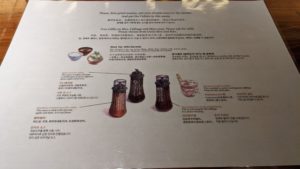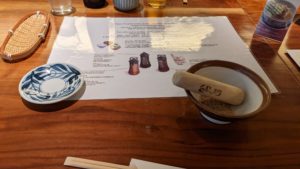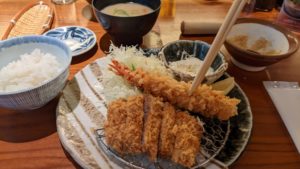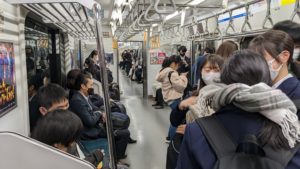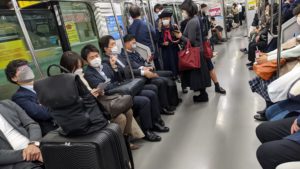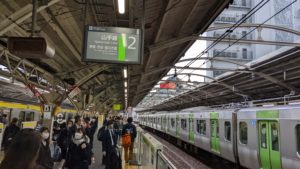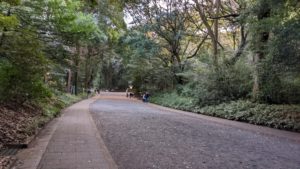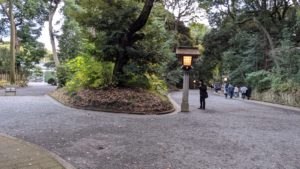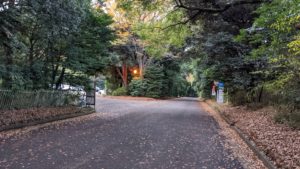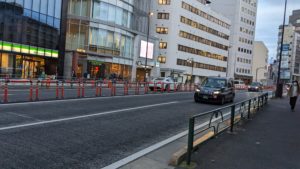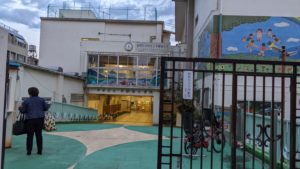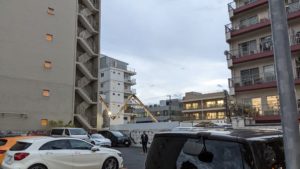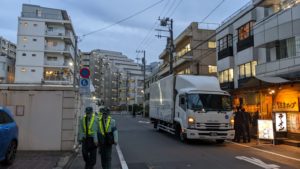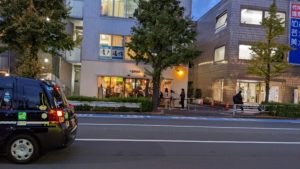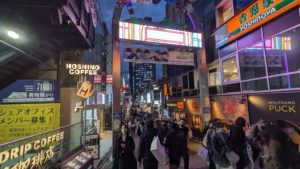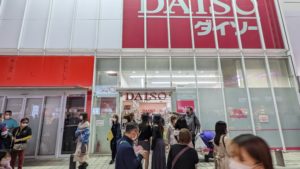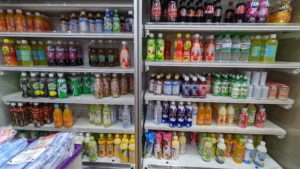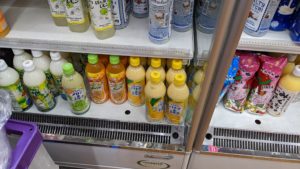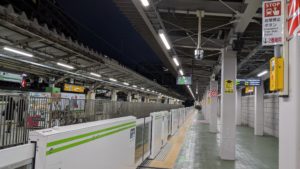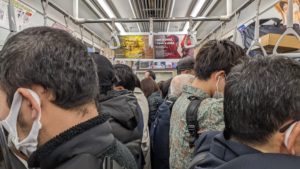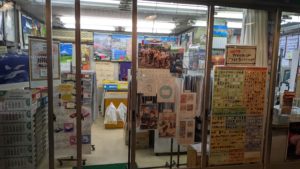Kami Watch Over Me Series - Table of Contents
| Entry | Notable Places/Events | Start of Day | End of Day |
|---|---|---|---|
| Day 0 – Thursday, Oct 20 2022 to Friday, Oct 21 2022 | Flight from Edmonton to Tokyo | Edmonton | Tokyo |
| Day 1 – Saturday, Oct 22 2022 | Saitama, Ikebukuro | Tokyo | Tokyo |
| Day 2 – Sunday, Oct 23 2022 | Autumn Reitaisai 9, Shinjuku | Tokyo | Tokyo |
| Day 3 – Monday, Oct 24 2022 | Akihabara | Tokyo | Tokyo |
| Day 4 – Tuesday, Oct 25 2022 | Hakone | Tokyo | Hakone |
| Day 5 – Wednesday, Oct 26 2022 | Kamakura, Enoshima Shrine | Hakone | Kamakura |
| Day 6 – Thursday, Oct 27 2022 | Hanno | Kamakura | Hanno |
| Day 7 – Friday, Oct 28 2022 | Shinkoiwa | Hanno | Tokyo |
| Day 8 – Saturday, Oct 29 2022 | Akihabara, Matsudo City | Tokyo | Tokyo |
| Day 9 – Sunday, Oct 30 2022 | M3-50, Moto-Yawata | Tokyo | Tokyo |
| Day 10 – Monday, Oct 31 2022 | Akasaka, Shimo-Kitazawa, Shibuya Halloween | Tokyo | Tokyo |
| Day 11 – Tuesday, Nov 01 2022 | Shinjuku, Sophia University | Tokyo | Tokyo |
| Day 12 – Wednesday, Nov 02 2022 | Sophia University, Kabukicho | Tokyo | Tokyo |
| Day 13 – Thursday, Nov 03 2022 | Shinjuku Loft | Tokyo | Tokyo |
| Day 14 – Friday, Nov 04 2022 | Shinjuku, Hanazono/Asakusa Tori no Ichi, Sensoji | Tokyo | Tokyo |
| Day 15 – Saturday, Nov 05 2022 | Nagano, Zenkoji | Tokyo | Nagano |
| Day 16 – Sunday, Nov 06 2022 | Ueda Sanada Festival, Ueda City, Sanada Shrine | Nagano | Nagano |
| Day 17 – Monday, Nov 07 2022 | Zenkoji, Kyoto, Nakagyo Ward | Nagano | Kyoto |
| Day 18 – Tuesday, Nov 08 2022 | Otsu, Omi Jingu | Kyoto | Kyoto |
| Day 19 – Wednesday, Nov 09 2022 | Fushimi Inari, Kashoji, Tofukuji, Shorinji | Kyoto | Kyoto |
| Day 20 – Thursday, Nov 10 2022 | Ohara, Sanzenin, Arashiyama | Kyoto | Kyoto |
| Day 21 – Friday, Nov 11 2022 | Kiyomizu, Ryozen Kannon, Yasaka Shrine | Kyoto | Kyoto |
| Day 22 – Saturday, Nov 12 2022 | Heian Raku Ichi Market, Osaka, Juso | Kyoto | Osaka |
| Day 23 – Sunday, Nov 13 2022 | Sukunahikona Shrine, Namba | Osaka | Osaka |
| Day 24 – Monday, Nov 14 2022 | Kobe (with Ran) | Osaka | Osaka |
| Day 25 – Tuesday, Nov 15 2022 | Maibara, Toyosato, Nagoya | Osaka | Nagoya |
| Day 26 – Wednesday, Nov 16 2022 | Osu, Banshoji, Naka | Nagoya | Nagoya |
| Day 27 – Thursday, Nov 17 2022 | Obara Shikizakura Festival, Rurikozanyakushi | Nagoya | Nagoya |
| Day 28 – Friday, Nov 18 2022 | Okayama, Kurashiki | Nagoya | Kurashiki |
| Day 29 – Saturday, Nov 19 2022 | Kyoto (with Xuanjie), Autumn Okayama Momotaro Festival | Kurashiki | Kurashiki |
| Day 30 – Sunday, Nov 20 2022 | Okayama, Sunrise Izumo | Kurashiki | Sunrise Izumo |
| Day 31 – Monday, Nov 21 2022 | Minowa, Enoshima Shrine, Ameyoko Market | Sunrise Izumo | Tokyo |
| Day 32 – Tuesday, Nov 22 2022 | Shibuya, Taito City | Tokyo | Tokyo |
| Day 33 – Wednesday, Nov 23 2022 | Akihabara | Tokyo | Tokyo |
| Day 34 – Thursday, Nov 24 2022 | Shinjuku (with Yaoxiang), Harajuku | Tokyo | Tokyo |
| Day 35 – Friday, Nov 25 2022 | Sensoji, Narita Airport, Flight from Tokyo to Edmonton | Tokyo | Edmonton |
| Final Thoughts | Final Thoughts |
Thursday, Nov 24 2022 (Day 34)
Lunch with a childhood friend
The highlight of today was a meeting with Yaoxiang in Shinjuku, whom I had not seen in 24 years. He was here in Tokyo with a friend that I had not met, vacationing for a week, and we arranged early in the morning to meet for lunch in a restaurant in Shinjuku which they had reserved.
Breakfast for me was yesterday’s curry packet together with my last packet of pre-cooked, microwaveable rice. This curry packet was supposedly rated a 10 on their hotness scale of 1-5, on the packet, but all it did for me was tingle. It did taste good, but it didn’t taste hot at all, and I was so disappointed that I forgot to take a picture of it.
My journey to Shinjuku was a bit awkward, and I would end up being about 15 minutes late for our 1pm meeting, just because it was so far away, Shinjuku Station being on the other side of the central Yamanote Line loop from Akihabara Station, which was the nearest station to Minowa Station where I stayed. There was a separate line there though, the JR Chuo/Sobu Line, which cut through the middle of the loop, so that was the line I took.
This Chuo/Sobu Line is very weird to describe — the Sobu Line part is the eastern part of the line, with Akihabara Station being the westernmost station on it. The Chuo Line is the western part of the line, with Ochanomizu Station being the easternmost station on it. There’s also two versions of the Chuo Line — one is a Rapid Chuo Line that starts in Tokyo Station and visits Ochanomizu Station, then to Yotsuya Station, where Sophia University is, and then to Shinjuku Station, skipping a bunch of smaller, local stops, and another one called the Chuo Main Line, which is the one that is part of the Chuo-Sobu Line and stops on all those in-between stops. They both have many stations that they don’t share with each other, and several that they do. The best picture I’ve seen for it is the top graphic on this page, whereby Akihabara Station is the first unlisted station on the left part of the yellow line that curves vertically off the chart.
So my path from Minowa Station was to take the (non-JR) Hibiya Line to Akihabara Station, then take the local train on the Chuo/Sobu Line (yellow line) one stop to Ochanomizu Station to get into the Chuo part of the line, and then take the Chuo Rapid train (orange or purple line) two stops to Shinjuku Station. So a couple of transfers and some mind-wrapping contemplation of the Tokyo train system later, and I was there.
This only took slightly over a half an hour, but I was waylaid on the way out by the owner of the hotel, the Chinese guy who had added me to his WeChat, who was likely the father of the girl who had checked me in, and who owned a black car that was always parked at the front of the hotel. He peppered me with a few questions, in Chinese, about when I was heading home and what I had done here in Japan, before I managed to extricate myself.
This was Ochanomizu Station, which I waited for a transfer for along the way. This station’s name always amuses me, because it means “the tea’s water”, although the Wikipedia page about the place states a reason for the name but currently has no citation for that claim. The train station with its one high wall and greenery coming down from the top reminded me of Bishan Station in Singapore, which has a green grass field/wall covering the entire view from floor to ceiling of at least one of its platforms if not both, although I don’t seem to have a picture of that station.
I texted Yaoxiang while on the train to let him know that I would be about 5-10 minutes late. He said that that was not a worry. Once I reached Shinjuku Station, I headed out and started walking toward the Takashimaya mall there, as the booking was for a restaurant called Katsukara on the 14th floor of that building. This place was familiar, as I had visited the area and even specifically the building itslf on Day 11 already. Obviously not the restaurants though, since it was far too expensive for my conscience. But it’s okay if it was for a meeting with someone else. (Yaoxiang also ended up paying for the meal, and refusing to take my payment, so kudos and big thanks to him for that).
The restaurant itself had a selection of different types of tonkatsu, and it was a neat experience. Besides the food itself being tasty, they brought along three sets of mortar and pestle with spices in each one, and we were supposed to pound the spices ourselves at the table to let the taste and aroma out. This reminded me of watching my late paternal grandmother cook at her place in Singapore — she lived in Bishan, so that was an odd loop back to the earlier station memory as well.
I had the Oebi and Hire-Katsu set meal.
Yaoxiang introduced me to his travelling partner, Winfred, whom he had met in Hong Kong something like five years ago and who had parents and family currently in Tokyo. The two of them were here to meet them as well and have a shared vacation together before (I think) Yaoxiang and Winfred would head on to Singapore. Yaoxiang also had plans to meet Paul in Tokyo on the 26th, but that would have been a day after I left so I wasn’t able to join that one. Through our old class’s WhatsApp group, I heard of several planned Singapore meetups happening as well, with Allen, KT, Yucheng, Harvey, and others. I remembered that Yucheng was also an occasional travel partner for Yaoxiang, as the two of them had been in Europe together when I visited California last year, so I had been unable to meet up with them then.
We chatted for over an hour and a half, exchanging details on what we had been up to, and what we were up to now. I think we might have accidentally made Winfred slightly bored at times since there were probably wide swaths of the conversation that he couldn’t outright participate in, but he was also very nice and friendly and interjected now and then when he could, plus he had a few great family stories himself that cracked me up. At the end of the lunch session, Winfred, who didn’t want to be photographed himself, took a picture of us.
Yaoxiang himself kind of reminded me of Jon, my younger brother, in looks. A slightly older version at least, since he’s the same age as me and I’m almost ten years older than Jon. It was a great meetup though and I was very happy that I finally saw him. We were both from Rosyth School as well (in Primary 4-6) and I definitely shared some classes with him there too, so we were in the same class for 4 or 5 years growing up. He left me an invitation to stop by and visit him the next time I came by the San Francisco Bay Area.
One thing I forgot was to give him my final postcard — I only remembered this about two minutes after we had parted ways next to Shinjuku Station, and I texted him about it but he said that he preferred not to collect physical things anyway since he was just on the start of his trip still, and on my part I had run out of Edmonton postcards anyway — the last card I had was a Canadian Rockies one, which really doesn’t work very well as a conversation piece compared to Edmonton-specific postcards. I decided to give it away to my current lodging hosts when I moved out the next day instead, since they were at least trying to be personable and friendly (even though I didn’t totally like them as I never totally forgave them for not providing spoons).
Sendagaya
After lunch, I had to pick what to do for my final afternoon here in Japan. I decided I had wanted to do some walking around, and Yaoxiang and Winfred had both suggested a number of places, with the neighbourhood of Aoyama in particular sticking out to me. I couldn’t directly reach there without any transfers from Shinjuku Station though, but I could get close, and then walk the rest of the way. I first took the local JR Chuo/Sobu Line three stop east and south, to a station called Shinanomachi Station, and actually got all the way outside past the ticket gate.
But at that point, while looking at the map on my phone, I was struck with a thought that I wanted to go to Harajuku instead, as I had only really passed by the area briefly on this trip, and it was a more iconic neighbourhood. It was also right next to Aoyama on the map, so it wasn’t terribly far either. And like my other choice, I also had a walking route there. I took the train two stops back toward Shinjuku Station, disembarking at Yoyogi Station and walking out the gates there.
The trains were full of businessmen in suits:
This student’s school uniform included a nice hat:
This was Yoyogi Station as I arrived:
And this was what it looked like outside the station:
Look at this crazy crosswalk! It looked so jarring to me.
From the station, I began walking south. But there was a nearby park/temple named Meiji Jingu that distracted me, so even though it was closing soon (and there were loudspeakers playing 15 minute closing warning notices soon after I got into the park itself), I went inside to walk around. The people inside already didn’t seem to care — the park around the shrine was so large that once closing time arrived at 4:30 pm, all the gate guards did was prevent new people from entering the gate, rather than go inside and chase people out. The impending threat of darkness would soon do that anyway. I never reached the actual shrine since it was closed by then anyway, but I walked southwards through the park and then followed a road north and back out the way I came in, spending about half an hour in here.
I then headed south and east through what was basically Sendagaya, the region in Shibuya City between Shinjuku Station to the north and Harajuku Station to the south. Yoyogi Station, where I started, was about a third of the way between the two stations, closer to Shinjuku Station than Harajuku Station, and I followed the Meiji-dori Avenue down as it wound southeast through the region, past all sorts of little shops and tiny buildings. I took a small handful of photos as I went, with this odd bit of architecture in particular catching my eye:
I ducked into a couple of supermarkets along the way too, looking for my nonexistant banana milk drink, and then eventually cut southwest along a main street that seemed to have no name (plenty of streets in Japan are like this though) all the way until I reached Harajuku Station from the northern end.
I was ready to go home by then, and almost did so, but also a bit hesitant to do so since this was my last night out. Harajuku, however, felt like a little bit of a waste of time for someone with no space to buy anything else for the trip home anyway. But I was here anyway, so I took a picture:
There was a little basement area to the left of where I took that picture from, with an oddly long and narrow FamilyMart convenience store down there. I went down there briefly, then came up again and walked down the street a little. I then saw a large Daiso store on my left, a branch of one of the main dollar store (110 yen) chains in Japan:
I knew they sold snacks and drinks here as well, so I went in wondering if here of all places would be where I would finally find my banana milk drink. But to no ava- oh wait.
There it was! I found it! Yatta! Apparently Daiso, the 110 yen store chain, or at least their branch in Harajuku, sells the Sangaria Maroyaka Banana & Milk drink that I loved but could not find in Tokyo until now. I happily bought one of those yellow bottles of mana, along with the melon version in the green bottle just to the left of it, just to try it out.
Daiso had a self-checkout system that involved me scanning my items and then depositing notes and coins into provided holes, and I noticed that they accepted even 5 yen and 1 yen coins. This was great, because I remember trying to deposit my extra Singapore money in the Royal Bank of Canada when I came home from my Singapore trip 6 months ago, and being told with a straight face by the guy serving me at the counter that “coins aren’t money”. The two drinks here cost 216 yen, and I deposited 141 yen worth of little coins into the machine, including 16 1-yen coins, basically every single coin I had that was under 100 yen in value. And then depositing a 100 yen coin in the slot to cover the last 75 yen, and getting back two 10-yen coins and a 5-yen coin just as the employee watching over the line of self-checkout machines started to approach me with concern since I was taking so long at my machine. I hurried off with my loot before she said anything.
Since I was carrying the two bottles of milk, I decided that that was a fitting end to my trip, and I headed into Harajuku Station to head home.
I took the train to Ueno Station, where I admired the large map of the local Tokyo train system on the wall and wondered why I had never seen a small brochure version of the train system the entire time that I was here.
And then took this weird little escalator that had a horizontal travelator portion in the middle of two regular diagonal escalator portions:
From Ueno Station, I took the Hibiya Line home, and this train was extremely crowded — this was the view on the train -after- a bunch of people had already gotten off the train at Iriya Station, the stop after Ueno Station and before my Minowa Station.
Before that it was really tight-fitting and there wasn’t really room to move at all.
Outside Minowa Station at street level, I caught sight of this calendar store that I wanted to share just because of how unique of a store idea it seemed (and how poorly they must do during the middle of the year):
I headed to yet another of the nearby supermarkets that I had not been to yet, Y’s Mart, to pick up some side dishes for the instant noodle dinner that I was going to make, which turned out to be some chicken and some salad.
They all ended up in a merry little bowl of noodles, which I consumed over my last couple hours of Japanese television.
I did my laundry again, partially packed my bags, and got ready to check out and head home the next day.
Shinkansen Running Total
I have a 21-day JR Pass that kicked in on Nov 05 and should last until the end of my trip on Nov 25. It cost $568 CAD, which cost around 61,769.08 yen, as per Google as of the first writing of this section. So I was curious and wanted to keep a running total — was this thing actually worth it?
That’s what I hope to find out with this section. For the full explanation blurb on this, check this corresponding section of the Day 15 blog post.
Trips
ට Nov 05 2022 – Asama 611 (Tokyo to Nagano) – U: 7810, R: 8340
ට Nov 06 2022 – Hakutaka 556 (Nagano to Ueda) – U: 1470, R: 2790
ට Nov 06 2022 – Asama 615 (Ueda to Nagano) – U: 1470, R: 2790
ට Nov 07 2022 – Kagayaki 509 (Nagano to Kanazawa) – 8920 (reserved seats only)
ට Nov 07 2022 – Thunderbird 24 (Kanazawa to Kyoto) – U: 6490, R: 6820
ට Nov 08 2022 – JR Kosei Line (Kyoto to Otsukyo) – 240 (unreserved seats only)
ට Nov 08 2022 – JR Kosei Line (Otsukyo to Kyoto) – 240 (unreserved seats only)
ට Nov 08 2022 – JR Nara Line (Kyoto to Inari) – 150 (unreserved seats only)
ට Nov 08 2022 – JR Nara Line (Inari to Kyoto) – 150 (unreserved seats only)
ට Nov 09 2022 – JR Nara Line (Tofukuji to Kyoto) – 150 (unreserved seats only)
ට Nov 10 2022 – JR Sanin/Sagano Line (Saga-Arashiyama to Kyoto) – 240 (unreserved seats only)
ට Nov 12 2022 – Super Hakuto 7 (Kyoto to Osaka) – U: 1230, R: 1760
ට Nov 15 2022 – Kodama 720 (Shin-Osaka to Maibara) – U: 4510, R: 4840
ට Nov 15 2022 – Kodama 748 (Maibara to Nagoya) – U: 3100, R: 3430
ට Nov 18 2022 – Hikari 505 (Nagoya to Okayama) – U: 10550, R: 11080
ට Nov 18 2022 – JR Marine Liner 45 (Okayama to Chayamachi) – 240 (unreserved seats only)
ට Nov 19 2022 – JR Marine Liner 17 (Hayashima to Okayama) – 240 (unreserved seats only)
ට Nov 19 2022 – Hikari 574 (Okayama to Shin-Kobe) – U: 5170, R: 5700
ට Nov 19 2022 – Hikari 504 (Shin-Kobe to Kyoto) – U: 2860, R: 3390
ට Nov 19 2022 – Hikari 509 (Kyoto to Okayama) – U: 7140, R: 7670
ට Nov 19 2022 – JR Marine Liner 51 (Okayama to Hayashima) – 240 (unreserved seats only)
ට Nov 20 2022 – JR Marine Liner 20 (Hayashima to Okayama) – 240 (unreserved seats only)
ට Nov 20 2022 – JR Seto/Ohashi Line (Okayama to Omoto) – 150 (unreserved seats only)
ට Nov 20 2022 – Sunrise-Izumo (Okayama to Tokyo) – 13970 (reserved seats only)
ට Nov 21 2022 – JR Yamanote Line (Tokyo to Ueno) – 160 (unreserved seats only)
ට Nov 21 2022 – JR Ueno-Tokyo Line (Ueno to Fujisawa) – 990 (unreserved seats only)
ට Nov 21 2022 – JR Ueno-Tokyo Line (Fujisawa to Tokyo) – 990 (unreserved seats only)
ට Nov 21 2022 – JR Yamanote Line (Tokyo to Okachimachi) – 140 (unreserved seats only)
ට Nov 22 2022 – JR Chuo/Sobu Line (Akihabara to Yoyogi) – 200 (unreserved seats only)
ට Nov 22 2022 – JR Yamanote Line (Yoyogi to Shibuya) – 0 (transfer)
ට Nov 22 2022 – JR Yamanote Line (Shibuya to Okachimachi) – 200 (unreserved seats only)
ට Nov 24 2022 – JR Chuo/Sobu Line (Akihabara to Ochanomizu) – 170 (unreserved seats only)
ට Nov 24 2022 – JR Chuo Line Rapid (Ochanomizu to Shinjuku) – 0 (transfer)
ට Nov 24 2022 – JR Chuo/Sobu Line (Shinjuku to Yoyogi) – 140 (unreserved seats only)
ට Nov 24 2022 – JR Yamanote Line (Harajuku to Ueno) – 200 (unreserved seats only)
Running Total
Unreserved: 80,160 yen
Reserved: 86,970 yen
